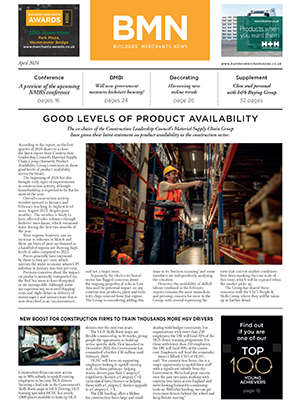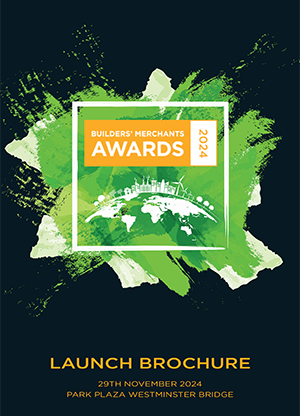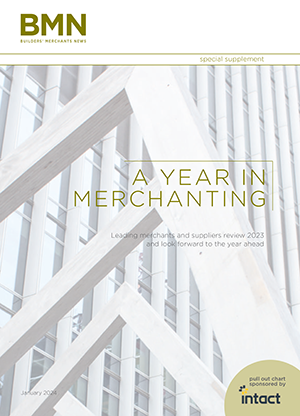It’s estimated that over 200 people are killed by workplace accidents every year. A further one million people become injured at work, and over two million suffer from illnesses caused by, or made worse by, their work.
In builders’ merchants the risks of both health and safety are high. Whether you work on the shop floor or out in the yard, hazards are rife, so it’s important to be fully aware of the risks around you.
The four most common types of injuries that workers in this environment are at risk of are:
Falls from height
Working at height includes any location where an employee could fall a distance – however big or small – making it a regular hazard at any builders’ merchant.
Loading materials on or off commercial vehicles, or using a ladder to reach higher shelves, are just a couple of typical hazards that crop up. And while many situations are low risk, employers and employees have a duty to know the dangers involved to take preventative measures.
Basic guidelines outlined in the Work at Height Regulations 2005 include:
- Use the right type of equipment for the job
- Minimise distance and clear the area of any additional hazards
- Don’t overload or overreach
- Ensure adequate training has been given.
Manual handling
The day-to-day life at a builders’ merchant involves plenty of manual handling activities – lifting and lowering timber, carrying brick blocks, and pulling loaded trolleys.
Over time this ongoing activity, when done incorrectly, can lead to debilitating musculoskeletal disorders. A combination of heavy items, poor posture and pre-existing medical conditions can increase the risk.
But injury from manual activity is easily prevented with just a few key considerations. Where possible:
- Use mechanical lifting aids
- Reduce carrying distances
- Push rather than pull loads
- Always ensure that employees have received adequate training on good handling techniques.
Workplace transport
Health and Safety Executive (HSE) statistics have the number of transport accidents at work around the 5,000 per year mark, with as many as 50 resulting in death as a result of falling from a vehicle or being crushed by one.
There are strict guidelines around using vehicles in the workplace. Carrying out your own risk assessment is vital to ensure the safety of employees and the general public.
Assess the site: For example, the design, traffic routes, visibility, speed, signs and signals, lighting, reversing areas, loading and unloading bays, and tipping areas.
Vehicle safety: Ensure they are suitable for purpose and regularly maintained.
Driver safety: Ensure competence in the vehicle’s operation, that adequate training has been given and that drivers are fit and well to operate.
Slips, trips and falls
Slips, trips and falls cause around 40% of reported major injuries. In fact, they create the highest risk to both employees and members of the public in builders’ merchants.
The Health and Safety at Work etc, Act 1974 outlines simple steps to take to prevent these accidents from occurring.
Use entrance matting to prevent floors from becoming slippery due to bad weather
- Clean up immediately after any spills
- Regularly check for loose or damaged flooring and replace where needed
- Provide adequate lighting internally and externally
- Avoid leaving stock blocking pathways, entrances or exits.
Always remember to carry out regular risk assessments to maintain standards in the shop and out in the yard. While the risk of personal injury is high, the risk to one’s health can be higher – depending on the type of activity being carried out.
Construction dust is an everyday occurrence
In use, saws and grinders produce a lot of dust, much of which has low-toxicity levels – for example, plasterboard, limestone and marble. But some materials like concrete, mortar and sandstone create silica dust. And this can be fatal, particularly if carrying out the same activity regularly and over a long period of time.
Over 500 construction workers are believed to die from exposure to silica dust every year. Therefore, it’s important to ensure dust is controlled using one of two methods:
- Dampen the site down with water. A good solution, but it must be maintained throughout the entire task to prevent dust particles from being inhaled.
- Use dust extraction equipment - the best solution as the site can more easily be contained and the dust extracted as soon as produced.
Understanding health and safety risks at a builders’ merchant is the responsibility of both the employer and employee. So remember, carry out regular risk assessments to protect the lives of everyone there.
Tim Dupont is marketing director at RVT Group.









